My
List |
Addition Date
|
Target
|
Mission
|
Instrument
|
Size
|

|
2003-11-13 |
Jupiter
|
Cassini-Huygens
|
ISS - Narrow Angle
|
1920x2400x3 |

|
-
PIA04866:
-
Cassini Jupiter Portrait
Full Resolution:
TIFF
(7.539 MB)
JPEG
(179.4 kB)
|

|
2003-05-22 |
Jupiter
|
Mars Global Surveyor (MGS)
|
Mars Orbiter Camera (MOC)
|
4655x961x3 |

|
-
PIA04532:
Jupiter and its Galilean Satellites as viewed from Mars
Full Resolution:
TIFF
(416.5 kB)
JPEG
(76.11 kB)
|

|
2003-02-27 |
Jupiter
|
Cassini-Huygens
|
MIMI
|
1500x1125x3 |
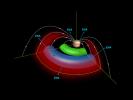
|
-
PIA04433:
-
Jupiter Torus Diagram
Full Resolution:
TIFF
(1.182 MB)
JPEG
(120.2 kB)
|

|
2003-02-27 |
Jupiter
|
Cassini-Huygens
|
MIMI
|
959x981x3 |

|
-
PIA04432:
-
Massive Gas Cloud Around Jupiter
Full Resolution:
TIFF
(544.7 kB)
JPEG
(24.23 kB)
|

|
2002-12-06 |
Io
|
Galileo
|
Solid-State Imaging
|
720x431x3 |
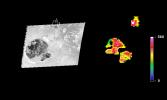
|
-
PIA03888:
-
Io's Gish Bar Volcanic Region in Infrared
Full Resolution:
TIFF
(140.8 kB)
JPEG
(24.83 kB)
|

|
2002-12-06 |
Io
|
Galileo
|
Solid-State Imaging
|
798x561x1 |
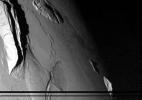
|
-
PIA03886:
-
Mountains on Io at Sunset
Full Resolution:
TIFF
(399.8 kB)
JPEG
(51.89 kB)
|

|
2002-12-06 |
Io
|
Galileo
|
Solid-State Imaging
|
4200x3200x3 |
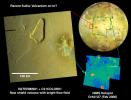
|
-
PIA03887:
-
Potential Source of Sulfur Flow on Io
Full Resolution:
TIFF
(22.3 MB)
JPEG
(947.9 kB)
|

|
2002-12-06 |
Io
|
Galileo
|
Solid-State Imaging
|
1907x2955x3 |

|
-
PIA03885:
-
Io's Culann-Tohil Region in Color
Full Resolution:
TIFF
(14.78 MB)
JPEG
(594.4 kB)
|

|
2002-12-06 |
Io
|
Galileo
|
Solid-State Imaging
|
1262x1043x1 |
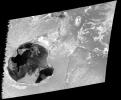
|
-
PIA03884:
-
Recent Eruption at Gish Bar Patera on Io
Full Resolution:
TIFF
(985.7 kB)
JPEG
(145.8 kB)
|

|
2002-10-30 |
Europa
|
Galileo
|
Solid-State Imaging
|
849x660x3 |
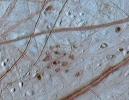
|
-
PIA03878:
-
Ruddy "Freckles" on Europa
Full Resolution:
TIFF
(1.683 MB)
JPEG
(132 kB)
|

|
2002-10-17 |
Callisto
|
Galileo
Voyager
|
VG Imaging Science Subsystem
Solid-State Imaging
|
8860x4490x3 |
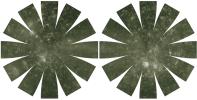
|
-
PIA03876:
-
Callisto Hemispherical Globes
Full Resolution:
TIFF
(49.38 MB)
JPEG
(3.662 MB)
|

|
2002-10-08 |
Jupiter
|
Galileo
Hubble Space Telescope
IRTF
|
WFPC2
|
650x300x3 |
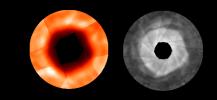
|
-
PIA03864:
-
Cold Hole Over Jupiter's Pole
Full Resolution:
TIFF
(176.2 kB)
JPEG
(15.88 kB)
|

|
2002-05-28 |
Io
|
Galileo
|
Near Infrared Mapping Spectrometer
|
974x509x3 |
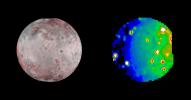
|
-
PIA03535:
-
Io in Infrared, Night and Day
Full Resolution:
TIFF
(312.2 kB)
JPEG
(36.39 kB)
|

|
2002-05-28 |
Io
|
Galileo
|
Near Infrared Mapping Spectrometer
|
816x600x3 |
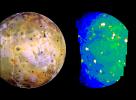
|
-
PIA03534:
-
Io in Infrared with Giant Plume's New Hot Spot
Full Resolution:
TIFF
(623.6 kB)
JPEG
(59.13 kB)
|

|
2002-05-28 |
Io
|
Galileo
|
Near Infrared Mapping Spectrometer
|
720x480x3 |
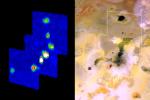
|
-
PIA03533:
-
Amirani Lava Flow on Io
Full Resolution:
TIFF
(606.9 kB)
JPEG
(34.96 kB)
|

|
2002-05-28 |
Io
|
Galileo
|
Solid-State Imaging
|
1122x842x1 |
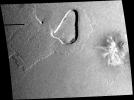
|
-
PIA03532:
-
Volcanic Depression and Shield Volcano, Io
Full Resolution:
TIFF
(885.6 kB)
JPEG
(142.7 kB)
|

|
2002-05-28 |
Io
|
Galileo
|
Solid-State Imaging
|
1280x929x1 |
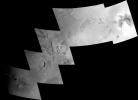
|
-
PIA03531:
-
New plume vent near Zamama, Io
Full Resolution:
TIFF
(197.7 kB)
JPEG
(71.94 kB)
|

|
2002-05-28 |
Io
|
Galileo
|
Solid-State Imaging
|
800x800x1 |
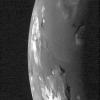
|
-
PIA03530:
-
Galileo's Best View of Loki Volcano on Io
Full Resolution:
TIFF
(477.5 kB)
JPEG
(89.71 kB)
|

|
2002-05-28 |
Io
|
Galileo
|
Solid-State Imaging
|
1280x866x1 |
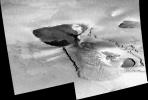
|
-
PIA03529:
-
Galileo's Last View of Tvashtar, Io
Full Resolution:
TIFF
(381.9 kB)
JPEG
(149.2 kB)
|

|
2002-05-28 |
Io
|
Galileo
|
Solid-State Imaging
|
1280x963x1 |
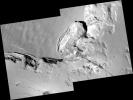
|
-
PIA03528:
-
Collapsing Cliff at Telegonus Mensa, Io
Full Resolution:
TIFF
(301.6 kB)
JPEG
(105 kB)
|

|
2002-05-28 |
Io
|
Galileo
|
Solid-State Imaging
|
1174x1024x1 |
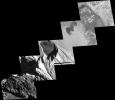
|
-
PIA03527:
-
Detailed View of Mountain and Craters at Tohil, Io
Full Resolution:
TIFF
(227.7 kB)
JPEG
(98.12 kB)
|

|
2002-05-10 |
Ganymede
|
Galileo
Voyager
|
VG Imaging Science Subsystem
VG Imaging Science Subsystem - Narrow Angle
|
8817x4382x3 |
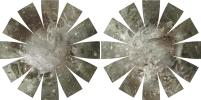
|
-
PIA03781:
-
Global Map of Ganymede
Full Resolution:
TIFF
(79.65 MB)
JPEG
(4.501 MB)
|

|
2002-03-13 |
Jupiter
|
Cassini-Huygens
|
Imaging Science Subsystem
|
512x512x1 |
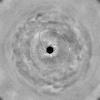
|
-
PIA03473:
-
Ultraviolet Movie of Jupiter's Polar Stratosphere
Full Resolution:
TIFF
(95.75 kB)
JPEG
(24.22 kB)
|

|
2002-03-13 |
Jupiter
|
Cassini-Huygens
|
Imaging Science Subsystem
|
1602x512x1 |

|
-
PIA03474:
-
Ultraviolet View Shows Jupiter's Stratosphere
Full Resolution:
TIFF
(424.2 kB)
JPEG
(67.22 kB)
|

|
2002-02-27 |
Jupiter
|
Cassini-Huygens
|
Imaging Radar
|
1700x2200x3 |

|
-
PIA03478:
-
Inner Radiation Belts of Jupiter
Full Resolution:
TIFF
(4.613 MB)
JPEG
(189.5 kB)
|

|
2002-02-27 |
Jupiter
|
Cassini-Huygens
|
|
1288x728x3 |
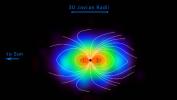
|
-
PIA03476:
-
Jupiter's Magnetosphere Made Visible
Full Resolution:
TIFF
(1.032 MB)
JPEG
(48.9 kB)
|

|
2002-02-16 |
Europa
|
Galileo
Voyager
|
|
8812x4381x3 |
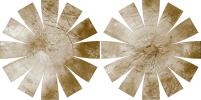
|
-
PIA03526:
-
Europa Hemispherical Globes
Full Resolution:
TIFF
(24.1 MB)
JPEG
(6.048 MB)
|

|
2001-12-10 |
Io
|
Galileo
|
Solid-State Imaging
|
5065x3361x1 |
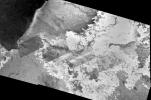
|
-
PIA02598:
-
Lava Channel at Io's Emakong Patera
Full Resolution:
TIFF
(12.18 MB)
JPEG
(1.129 MB)
|

|
2001-12-10 |
Io
|
Galileo
|
Solid-State Imaging
|
954x1035x1 |

|
-
PIA03600:
-
Tall Mountain, Tohil Mons, on Io
Full Resolution:
TIFF
(687.7 kB)
JPEG
(120.4 kB)
|

|
2001-12-10 |
Io
|
Galileo
|
Near Infrared Mapping Spectrometer
|
740x340x3 |
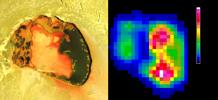
|
-
PIA03601:
-
Io's Tupan Caldera in Infrared
Full Resolution:
TIFF
(501.9 kB)
JPEG
(36.29 kB)
|

|
2001-12-10 |
Io
|
Galileo
|
Photopolarimeter-Radiometer
|
1655x1339x3 |
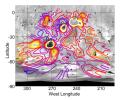
|
-
PIA03603:
-
Nighttime Temperatures on Southern Io
Full Resolution:
TIFF
(2.642 MB)
JPEG
(344.3 kB)
|

|
2001-12-10 |
Io
|
Galileo
|
Near Infrared Mapping Spectrometer
|
540x360x3 |
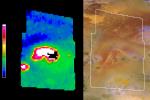
|
-
PIA03602:
-
A New Hot Spot on Northern Io
Full Resolution:
TIFF
(301.3 kB)
JPEG
(25.83 kB)
|

|
2001-12-10 |
Io
|
Galileo
|
Solid-State Imaging
|
736x680x3 |
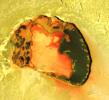
|
-
PIA02599:
-
Colorful Tupan Patera, Io
Full Resolution:
TIFF
(1.55 MB)
JPEG
(68.25 kB)
|

|
2001-11-29 |
Callisto
|
Galileo
|
Solid-State Imaging
|
1280x774x1 |
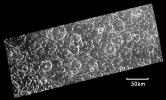
|
-
PIA02593:
-
Opposite Side of Callisto from Valhalla Impact
Full Resolution:
TIFF
(609.1 kB)
JPEG
(121.2 kB)
|

|
2001-11-27 |
Io
|
Galileo
|
Solid-State Imaging
|
798x401x1 |
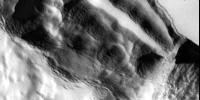
|
-
PIA02597:
-
Slumping Cliff on Io in High Resolution
Full Resolution:
TIFF
(309.9 kB)
JPEG
(41.94 kB)
|

|
2001-11-27 |
Io
|
Galileo
|
Solid-State Imaging
|
800x623x3 |
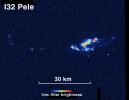
|
-
PIA02596:
-
Io's Pele Glowing in the Dark
Full Resolution:
TIFF
(471.9 kB)
JPEG
(98.62 kB)
|

|
2001-11-27 |
Io
|
Galileo
|
Near Infrared Mapping Spectrometer
|
595x415x3 |
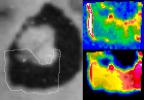
|
-
PIA02595:
-
Io's Loki in Infrared: Hot Edge
Full Resolution:
TIFF
(94.45 kB)
JPEG
(34.11 kB)
|

|
2001-11-27 |
Io
|
Galileo
|
Near Infrared Mapping Spectrometer
|
468x620x3 |

|
-
PIA02594:
-
Io's Tvashtar Area in Infrared: Multiple Lava Flows
Full Resolution:
TIFF
(441.1 kB)
JPEG
(31.68 kB)
|

|
2001-10-04 |
Io
|
Galileo
|
Solid-State Imaging
|
690x254x3 |
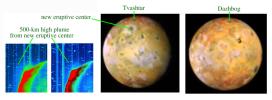
|
-
PIA02592:
-
Northern Plume and Plume Deposits on Io
Full Resolution:
TIFF
(297.1 kB)
JPEG
(27.59 kB)
|

|
2001-10-04 |
Io
|
Galileo
|
Near Infrared Mapping Spectrometer
|
1152x576x3 |
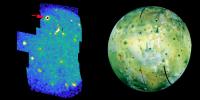
|
-
PIA02591:
-
Hot Spots on Io
Full Resolution:
TIFF
(806.2 kB)
JPEG
(73.93 kB)
|

|
2001-08-22 |
Callisto
|
Galileo
|
Solid-State Imaging
|
740x753x3 |

|
-
PIA03456:
-
Global Callisto in Color
Full Resolution:
TIFF
(1.219 MB)
JPEG
(73.69 kB)
|

|
2001-08-22 |
Callisto
|
Galileo
|
Solid-State Imaging
|
2000x1510x1 |
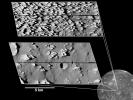
|
-
PIA03455:
-
Callisto Close-up with Jagged Hills
Full Resolution:
TIFF
(1.625 MB)
JPEG
(311.7 kB)
|

|
2001-07-21 |
Jupiter
|
Hubble Space Telescope
|
WFPC2
|
752x417x3 |
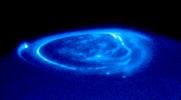
|
-
PIA03155:
-
Satellite Footprints Seen in Jupiter Aurora
Full Resolution:
TIFF
(202.4 kB)
JPEG
(34.06 kB)
|

|
2001-07-16 |
Jupiter
|
Cassini-Huygens
|
Imaging Science Subsystem
|
1157x633x1 |
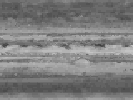
|
-
PIA03454:
-
70 Days of Jupiter Winds

Full Resolution:
|

|
2001-07-16 |
Jupiter
|
Cassini-Huygens
|
Imaging Science Subsystem
|
1157x633x1 |
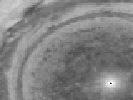
|
-
PIA03453:
-
Jupiter Polar Winds Movie Blowup

Full Resolution:
|

|
2001-07-16 |
Jupiter
|
Cassini-Huygens
|
Imaging Science Subsystem
|
499x497x1 |
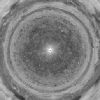
|
-
PIA03452:
-
Jupiter Polar Winds Movie

Full Resolution:
TIFF
(248.5 kB)
JPEG
(25.72 kB)
|

|
2001-06-22 |
Europa
|
Galileo
|
Solid-State Imaging
|
536x900x3 |

|
-
PIA02590:
-
Europa's Frozen Surface
Full Resolution:
TIFF
(1.322 MB)
JPEG
(111.1 kB)
|

|
2001-06-22 |
Io
|
Galileo
|
Photopolarimeter-Radiometer
|
1157x574x3 |
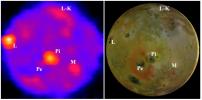
|
-
PIA02589:
-
Io's Nighttime Heat
Full Resolution:
TIFF
(1.384 MB)
JPEG
(51.07 kB)
|

|
2001-05-31 |
Jupiter
|
Cassini-Huygens
|
Imaging Science Subsystem
|
1349x1603x3 |

|
-
PIA03451:
-
Cassini's Farewell to Jupiter
Full Resolution:
TIFF
(1.024 MB)
JPEG
(48.02 kB)
|

|
2001-05-31 |
Io
|
Cassini-Huygens
|
Imaging Science Subsystem
|
1157x633x1 |
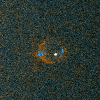
|
-
PIA03450:
-
Io Color Eclipse Movie

Full Resolution:
|

|
2001-03-29 |
Io
|
Cassini-Huygens
Galileo
|
Solid-State Imaging
|
1100x900x3 |
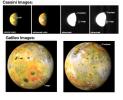
|
-
PIA02588:
-
Galileo and Cassini Image Two Giant Plumes on Io
Full Resolution:
TIFF
(1.374 MB)
JPEG
(96.56 kB)
|

|
2001-03-13 |
Ganymede
|
Galileo
|
Solid-State Imaging
|
1089x842x1 |
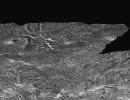
|
-
PIA03218:
-
Ganymede Topography
Full Resolution:
TIFF
(586.4 kB)
JPEG
(182.9 kB)
|

|
2001-03-13 |
Ganymede
|
Galileo
|
Solid-State Imaging
|
542x425x1 |
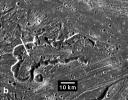
|
-
PIA03217:
-
Caldera in Sippar Sulcus, Ganymede
Full Resolution:
TIFF
(245.7 kB)
JPEG
(57.36 kB)
|

|
2001-03-13 |
Ganymede
|
Galileo
|
Solid-State Imaging
|
404x294x1 |
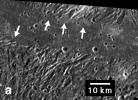
|
-
PIA03216:
-
Ridges and Troughs in Sippar Sulcus, Ganymede
Full Resolution:
TIFF
(96.07 kB)
JPEG
(28.92 kB)
|

|
2001-03-13 |
Ganymede
|
Galileo
|
Solid-State Imaging
|
328x450x3 |

|
-
PIA03215:
-
Erech Sulcus, Ganymede
Full Resolution:
TIFF
(141.7 kB)
JPEG
(35.15 kB)
|

|
2001-03-13 |
Ganymede
|
Galileo
|
Solid-State Imaging
|
1078x636x3 |
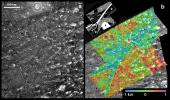
|
-
PIA03214:
-
Sippar Sulcus, Ganymede
Full Resolution:
TIFF
(1.332 MB)
JPEG
(255 kB)
|

|
2001-02-26 |
Io
|
Galileo
|
Solid-State Imaging
|
1270x660x3 |
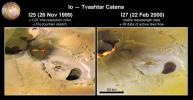
|
-
PIA02584:
-
Eruption at Tvashtar Catena on Io
Full Resolution:
TIFF
(1.901 MB)
JPEG
(114.5 kB)
|

|
2001-02-23 |
Io
|
Galileo
|
Solid-State Imaging
|
3347x2531x1 |
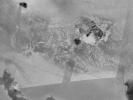
|
-
PIA02586:
-
Tohil Mons, Io
Full Resolution:
TIFF
(5.223 MB)
JPEG
(602.5 kB)
|

|
2001-02-23 |
Io
|
Galileo
|
Solid-State Imaging
|
4000x2500x3 |
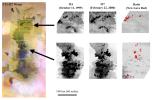
|
-
PIA02585:
-
Amirani's Big Lava Flow on Io
Full Resolution:
TIFF
(12.55 MB)
JPEG
(619.1 kB)
|

|
2001-02-05 |
Jupiter
|
Cassini-Huygens
|
Imaging Science Subsystem
|
250x356x3 |

|
-
PIA02883:
-
Jupiter Night-Side Auroras, North and South
Full Resolution:
TIFF
(122.1 kB)
JPEG
(23.6 kB)
|

|
2001-02-05 |
Jupiter
|
Cassini-Huygens
|
Imaging Science Subsystem
|
400x400x1 |
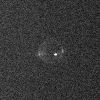
|
-
PIA02882:
-
Io in Eclipse, Movie

Full Resolution:
|

|
2001-01-31 |
Himalia
|
Cassini-Huygens
|
Imaging Science Subsystem
|
735x540x3 |
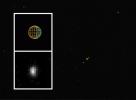
|
-
PIA02881:
-
Himalia, a Small Moon of Jupiter
Full Resolution:
TIFF
(255.8 kB)
JPEG
(29.74 kB)
|

|
2001-01-30 |
Jupiter
|
Cassini-Huygens
|
Imaging Science Subsystem
|
1920x1080x3 |
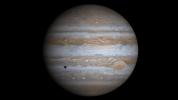
|
-
PIA02873:
-
High Resolution Globe of Jupiter
Full Resolution:
TIFF
(2.379 MB)
JPEG
(76.68 kB)
|

|
2001-01-23 |
Jupiter
|
Cassini-Huygens
|
Imaging Science Subsystem
|
1157x633x1 |
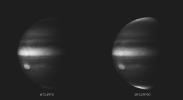
|
-
PIA02880:
-
Polarized Light from Jupiter
Full Resolution:
TIFF
(113.6 kB)
JPEG
(17 kB)
|

|
2001-01-23 |
Jupiter
|
Cassini-Huygens
|
Imaging Science Subsystem
|
999x959x3 |
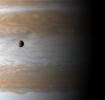
|
-
PIA02879:
-
A New Year for Jupiter and Io
Full Resolution:
TIFF
(2.004 MB)
JPEG
(41.52 kB)
|

|
2001-01-23 |
Jupiter
|
Cassini-Huygens
|
Imaging Science Subsystem
|
950x600x1 |
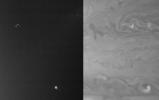
|
-
PIA02878:
-
Jupiter Night and Day
Full Resolution:
TIFF
(290 kB)
JPEG
(30.33 kB)
|

|
2001-01-23 |
Jupiter
|
Cassini-Huygens
|
Imaging Science Subsystem
|
2009x1020x3 |
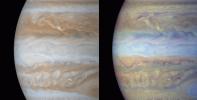
|
-
PIA02877:
-
Jupiter in True and False Color
Full Resolution:
TIFF
(1.031 MB)
JPEG
(134.4 kB)
|

|
2001-01-03 |
Jupiter
|
Cassini-Huygens
|
Imaging Science Subsystem
|
720x486x3 |
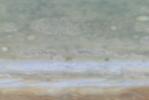
|
-
PIA02876:
-
Jupiter's High Latitudes
Full Resolution:
TIFF
(738.3 kB)
JPEG
(17.88 kB)
|

|
2001-01-03 |
Jupiter
|
Cassini-Huygens
|
Imaging Science Subsystem
|
720x486x3 |
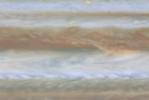
|
-
PIA02875:
-
Jupiter Hot Spot
Full Resolution:
TIFF
(763.2 kB)
JPEG
(19.53 kB)
|

|
2000-12-31 |
Jupiter
|
Cassini-Huygens
|
Imaging Science Subsystem
|
720x486x3 |
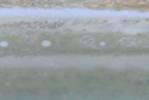
|
-
PIA02869:
-
Southern Hemisphere Storms
Full Resolution:
TIFF
(704 kB)
JPEG
(17.45 kB)
|

|
2000-12-30 |
Jupiter
|
Cassini-Huygens
|
Imaging Science Subsystem
|
640x480x1 |

|
-
PIA02872:
-
Satellite Rings Movie

Full Resolution:
TIFF
(142.4 kB)
JPEG
(45.63 kB)
|

|
2000-12-30 |
Jupiter
|
Cassini-Huygens
|
Imaging Science Subsystem
|
720x486x3 |
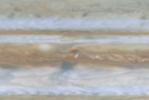
|
-
PIA02871:
-
Storm Merger on Jupiter
Full Resolution:
TIFF
(795.6 kB)
JPEG
(20.62 kB)
|

|
2000-12-30 |
Jupiter
|
Cassini-Huygens
|
Imaging Science Subsystem
|
720x486x3 |
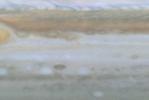
|
-
PIA02870:
-
Small Storms Near Great Red Spot
Full Resolution:
TIFF
(743.7 kB)
JPEG
(17.88 kB)
|

|
2000-12-30 |
Jupiter
|
Cassini-Huygens
|
Imaging Science Subsystem
|
720x486x3 |
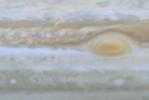
|
-
PIA02868:
-
Turbulent Region Near Great Red Spot
Full Resolution:
TIFF
(784.5 kB)
JPEG
(19.15 kB)
|

|
2000-12-30 |
Jupiter
|
Cassini-Huygens
|
Imaging Science Subsystem
|
720x486x3 |
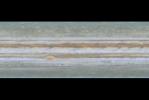
|
-
PIA02867:
-
2-D Atmosphere Movie
Full Resolution:
TIFF
(461.1 kB)
JPEG
(26.16 kB)
|

|
2000-12-30 |
Jupiter
|
Cassini-Huygens
|
Imaging Science Subsystem
|
720x486x3 |
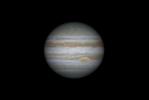
|
-
PIA02866:
-
3-D Atmosphere Movie
Full Resolution:
TIFF
(201.6 kB)
JPEG
(11.49 kB)
|

|
2000-12-29 |
Jupiter
|
Cassini-Huygens
|
Imaging Science Subsystem
|
1027x924x1 |
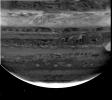
|
-
PIA02865:
-
Jupiter Clouds in Depth
Full Resolution:
TIFF
(742.9 kB)
JPEG
(135.7 kB)
|

|
2000-12-28 |
Jupiter
|
Cassini-Huygens
|
Imaging Science Subsystem
|
1799x600x3 |
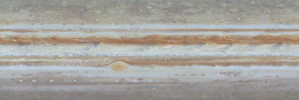
|
-
PIA02863:
-
Planetwide Color Movie

Full Resolution:
|

|
2000-12-27 |
Jupiter
|
Cassini-Huygens
|
Imaging Science Subsystem
|
1799x600x3 |
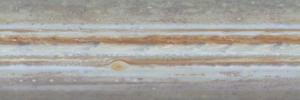
|
-
PIA02864:
-
Still from Planetwide Movie
Full Resolution:
TIFF
(2.582 MB)
JPEG
(81.28 kB)
|

|
2000-12-23 |
Jupiter
|
Cassini-Huygens
|
Imaging Science Subsystem
|
747x731x3 |
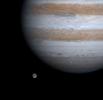
|
-
PIA02862:
-
Ganymede and Jupiter
Full Resolution:
TIFF
(732.8 kB)
JPEG
(26.34 kB)
|

|
2000-12-21 |
Jupiter
|
Cassini-Huygens
|
Imaging Science Subsystem
|
846x1016x3 |

|
-
PIA02861:
-
Europa and Callisto under the Watchful Gaze of Jupiter
Full Resolution:
TIFF
(728 kB)
JPEG
(31 kB)
|

|
2000-12-21 |
Jupiter
|
Cassini-Huygens
|
Imaging Science Subsystem
|
317x487x1 |

|
-
PIA02859:
-
Jupiter's Main Ring and 2 Satellites
Full Resolution:
TIFF
(126.6 kB)
JPEG
(33.26 kB)
|

|
2000-12-20 |
Jupiter
|
Cassini-Huygens
|
Imaging Science Subsystem
|
1020x986x3 |
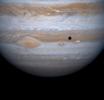
|
-
PIA02860:
-
Io in Front of Jupiter
Full Resolution:
TIFF
(1.728 MB)
JPEG
(56.76 kB)
|

|
2000-12-19 |
Jupiter
|
Cassini-Huygens
|
Imaging Science Subsystem
|
1001x888x3 |
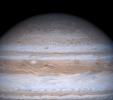
|
-
PIA02856:
-
High Latitude Mottling on Jupiter
Full Resolution:
TIFF
(2.031 MB)
JPEG
(119.8 kB)
|

|
2000-12-19 |
Jupiter
|
Voyager
|
VG ISS - Narrow Angle
|
213x160x1 |
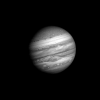
|
-
PIA02855:
-
Voyager 1 "Blue Movie"

Full Resolution:
|

|
2000-12-19 |
Io
|
Voyager
|
VG ISS - Narrow Angle
|
260x260x1 |

|
-
PIA02857:
-
Io Rotation Movie

Full Resolution:
|

|
2000-12-19 |
Io
|
Voyager
|
VG ISS - Narrow Angle
|
260x260x1 |
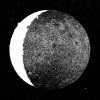
|
-
PIA02858:
-
Jupiter-shine' on Io

Full Resolution:
|

|
2000-12-17 |
Ganymede
|
Galileo
|
Solid-State Imaging
|
512x384x1 |
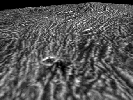
|
-
PIA02583:
-
Arbela Sulcus Flyover Movie

Full Resolution:
|

|
2000-12-16 |
Ganymede
|
Galileo
|
Solid-State Imaging
|
795x767x1 |
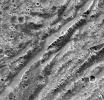
|
-
PIA02582:
-
Stair-step Scarps in Dark Terrain on Ganymede
Full Resolution:
TIFF
(615.6 kB)
JPEG
(143.8 kB)
|

|
2000-12-16 |
Ganymede
|
Galileo
|
Solid-State Imaging
|
3328x2330x1 |
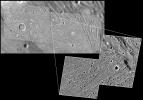
|
-
PIA02581:
-
Not-so-smooth Bright Terrain of Harpagia Sulcus
Full Resolution:
TIFF
(4.338 MB)
JPEG
(966.7 kB)
|

|
2000-12-16 |
Ganymede
|
Galileo
|
Solid-State Imaging
|
3777x2760x1 |
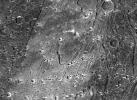
|
-
PIA02580:
-
Caldera-like depression on Ganymede
Full Resolution:
TIFF
(7.14 MB)
JPEG
(1.173 MB)
|

|
2000-12-16 |
Ganymede
|
Galileo
|
Solid-State Imaging
|
1358x1098x3 |
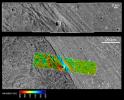
|
-
PIA02579:
-
Bright-dark boundary and topographical model
Full Resolution:
TIFF
(2.085 MB)
JPEG
(273.1 kB)
|

|
2000-12-16 |
Ganymede
|
Galileo
|
Solid-State Imaging
|
1228x512x3 |
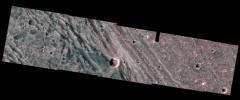
|
-
PIA02578:
-
Bright-Dark Terrain Boundary in stereo
Full Resolution:
TIFF
(1.147 MB)
JPEG
(90.2 kB)
|

|
2000-12-16 |
Ganymede
|
Galileo
|
Solid-State Imaging
|
1764x809x1 |
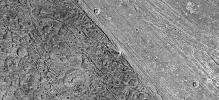
|
-
PIA02577:
-
Bright-Dark Terrain Boundary, Ganymede
Full Resolution:
TIFF
(1.508 MB)
JPEG
(364.7 kB)
|

|
2000-12-16 |
Ganymede
|
Galileo
|
Solid-State Imaging
|
1000x751x1 |
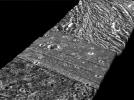
|
-
PIA02576:
-
Perspective view of Arbela Sulcus, Ganymede
Full Resolution:
TIFF
(561.9 kB)
JPEG
(118.7 kB)
|

|
2000-12-16 |
Ganymede
|
Galileo
|
Solid-State Imaging
|
2514x1929x1 |
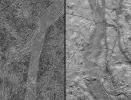
|
-
PIA02575:
-
Comparison of Ganymede and Europa features
Full Resolution:
TIFF
(5.617 MB)
JPEG
(1.04 MB)
|

|
2000-12-16 |
Ganymede
|
Galileo
|
Solid-State Imaging
|
1026x1748x1 |

|
-
PIA02574:
-
Ganymede Feature Resembling Europa
Full Resolution:
TIFF
(1.687 MB)
JPEG
(378.7 kB)
|

|
2000-12-16 |
Ganymede
|
Galileo
|
Solid-State Imaging
|
1249x1939x1 |

|
-
PIA02573:
-
Regional View of Bright and Dark Terrain
Full Resolution:
TIFF
(2.894 MB)
JPEG
(598.8 kB)
|

|
2000-12-16 |
Ganymede
|
Galileo
|
Solid-State Imaging
|
2603x756x1 |

|
-
PIA02572:
-
Region of Ganymede with Mix of Terrains
Full Resolution:
TIFF
(2.166 MB)
JPEG
(451.2 kB)
|

|
2000-12-16 |
Ganymede
|
Galileo
|
Solid-State Imaging
|
2000x2300x1 |

|
-
PIA02571:
-
Ganymede Dark Terrain at High Resolution
Full Resolution:
TIFF
(3.771 MB)
JPEG
(838.9 kB)
|

 Planetary Data System
Planetary Data System





















































































































